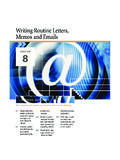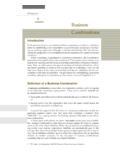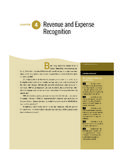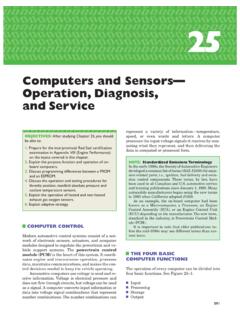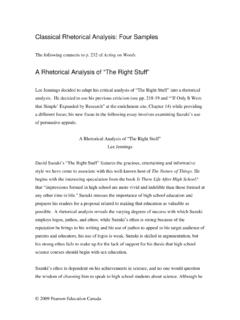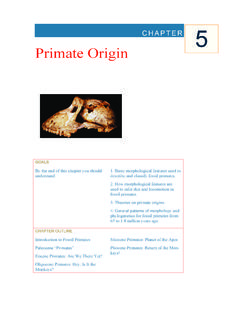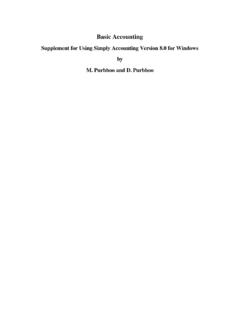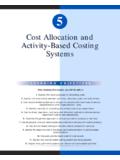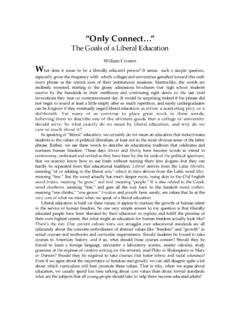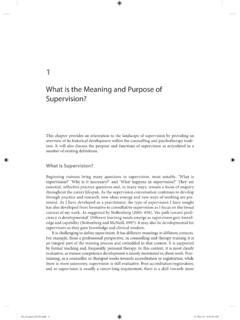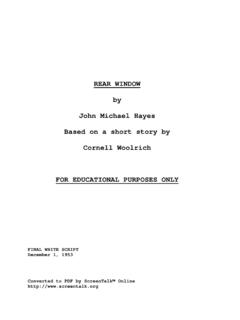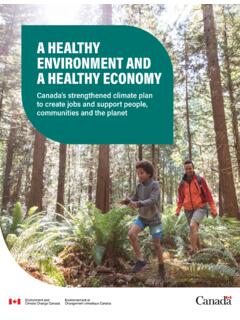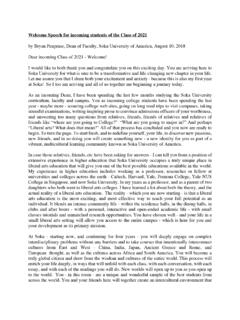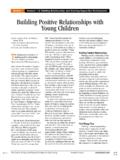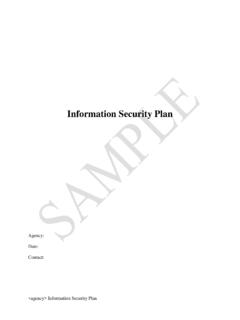Transcription of 9 Formal Reports and Proposals - Pearson
1 Formal Reportsand Proposals9 The distinctions between Formal and informal Reports are often blurred. Nevertheless,a Formal report is usually written to someone in another company or it is written for a senior manager in the same company, or for someone withwhom the writer has little regular contact. Usually it is longer than an informal reportand requires more extensive research. Unless you are a consultant, you are unlikely to beasked to write a Formal report often. When you are, there may be a lot riding on it including your purpose of this chapter is to show you how to write a Formal report and how toput together the kind of proposal that often precedes it.
2 As Figure 9-1 shows, many of theelements of Formal Reports are the same as those for informal need to pay thesame attention to headings, lists, and illustrations, for example. Although much of theadvice in the previous chapter could be duplicated in this one, the emphasis here will beon those areas where there s a 9-1 Contrasting Features of Informal and Formal ReportsInformalFormalReaderoften internaloften external or distantwithin organizationLength usually short usually long (3 pages or more) several sections sections and subsectionsTone personal more impersonal contractions no contractionsSummaryintegratedon separate pageIntroductionno headingcan have one or more headingsTitleappears as subject lineappears on separate title pagein memo headingTransmittal pageoptionalcovering letter or memoContents pagenoneuseful if report is over 5 pagesThe Four R s of PlanningAs emphasized earlier, the first step in planning any piece of correspondence is to thinkabout the reason for writing and about the receiver.
3 For a long , Formal report you needto add two more R s to your planning sheet: restrictions and the Reason for Writing and the ReceiverAs discussed in Chapter 2, Formal Reports are usually less personal than informal omit the contractions of personal conversation and tend to name fewer , Formal Reports have tried to give a sense of objectivity by omitting thepersonal I. As a result, passages were often convoluted and difficult to read. While I-freereports are still the practice in some circles, business writers are increasingly using Iinformal Reports to produce clearer and more forceful writing. (In informal Reports ,personal pronouns are not only tolerated but recommended.)
4 However, avoid I think or in my opinion phrases when you can complete the thought without them:XI found that the fittings were defective. The fittings were my view, the market value will rise in the spring. Market value will probably rise in the you are part of a group, you can also refer to we, since the collective weight of a groupseems more objective than that of an individual. In any case, use Irather than referring toyourself impersonally as the writeror the RestrictionsWhat are the limitations on the resources that will be available to help you with thereport? What will be your budget? What expenses will be involved andis the budget adequate to cover them?
5 You have the services of a good typist or illustrator? Willoutside help be required? is your deadline? Create a realistic time line on a graph withthe various stages of the report plotted on it at specific dates so many daysor weeks for research, organizing, writing, editing, and final production. Thelarger the task, the more important these self-imposed dates become. In193 Chapter 9 Formal Reports and Proposalsallocating time, you may be wise to leave a margin of error for delays,whether from bureaucratic mix-ups or postal on ResearchBefore beginning your research, explore the subject itself to avoid taking too narrow apath and overlooking important alternatives.
6 Good questions are an effective stimulus forseeing different perspectives on an issue. Here are some ways to yourself or with a colleague, blitz the subject. Jotdown all the questions you can think of that relate to the topic, in whateverorder they occur. Don t be negative or rule anything out at this DiagramAssume that the subject is the trunk and add as many largeand small branches as you can to represent the different aspects of thesubject. Again, think of the branches as questions. Tree diagramming can beuseful by itself or as a second stage of random 9-2 Example of a Tree Diagrambudget cutstale approachAdvertisingWeaknessoutdated designReasons forProduct LagDrop in Salesnew features neededconsumer spending downPrice Resistancepoor economyproduct a luxury itemcheap s ApproachIn researching a story, journalists consider theW s of reporting: Who?
7 What? When? Where? Why? For your researchplanning, try asking the same five questions and add another: How? Use thebasic questions to formulate other 3C ApproachA more thorough way to explore a topic is to askquestions about three areas:194 Impact: A Guide to Business Communication ComponentsHow can the subject be divided? How many different waysare there to partition it? ChangeWhat are the changed or changing elements of the subject? Whatare the causes or effects of certain actions? What trends are there? ContextWhat is the larger issue or field into which this subject fits? Howhave others dealt with the problems associated with the subject?Once you have stretched your mind exploring the possibilities of a subject, move in theother direction.
8 Think of limiting the subject and working out the precise focus of yourstudy. Weigh the time and expense of the research against its importance to the that it s better to do a limited topic well than a broad one some of your research you may have to turn togovernment documents or academic studies. Librarians can be a great helpin finding information or showing the fastest way to get a computer libraries now have access to extensivedatabases that allow you to source needed information quickly by example, a computer search can show you where to find all the articles,books, and reviews on a topic. It can itemize a certain kind of transaction oreconomic activity over a given period of time.
9 CD-ROM indexes enable youto search by author, by title, or by keyword, sometimes giving briefsummaries or even the full text of each article. When you enter thekeywords that describe the limits of your topic (for example, free trade,auto parts, Canada), the computer search will list the material relating tothat combination of terms. Although much of the same reference material isavailable in books, your library may not have all of them, or they may not beas up to date as the computerized material. Besides, it s a much slowerprocess to search through librarian can guide you to the most relevant database for your information and the Internet provide access tonewsgroups, discussion lists, and forums that focus on specific the most powerful research tool of all, however, is the World WideWeb.
10 Using search engines such as AltaVista or Excite or a directory such asYahoo, you can look for online articles on any subject. Today writing andresearch is commonly published on a Web site, providing a rich source ofinformation, particularly on current 9 Formal Reports and for inside you are doing a report on a particularcompany or organization, don t overlook the most accessible source ofinformation internal records and the employees themselves. Many anunsuspecting report writer has spent days searching for facts readilyavailable in internal files. If the topic is one of continuing concern to thecompany, chances are that someone has looked at it, or an aspect of it,before.
